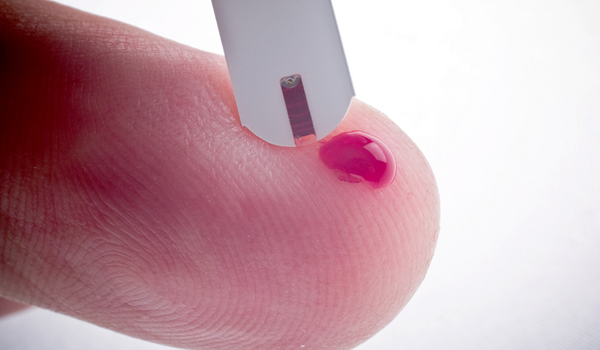New Diabetes Device Tests Tears Instead of Blood

For diabetics, there is no comfortable way to accurately measure blood sugar that does not involve blood. Testing takes a little pinprick, but some people who should test many times a day don't because of the pain.
Engineers and doctors across the world have worked for years to find a painless way, and now a new study adds another drop of confidence to the idea of testing tears instead of blood.
A sensor developed by researchers at the University of Michigan detected dilute levels of sugar, or glucose, in tears, according to the study published yesterday (Nov. 9) in the journal Analytical Chemistry.
In a test of 12 rabbits, researchers showed that glucose levels in tears correlated to glucose levels in the blood, upping the competition to find a bloodless test for diabetics.
Clinicians say there is great demand for an alternative to finger-prick tests. The American Diabetes Association estimates 25.8 million people in the United States have diabetes, though of those, 7 million are undiagnosed.
"This is an incredibly hot area," said Dr. George Grunberger, who serves on the board of the American Association of?Clinical Endocrinologists. "People have been trying to read glucose through skin, through measurements attached on the earlobe. There have been machines on the market that got taken off the market because of unreliability and poor reproducibility."
Testing tears
Sign up for the Live Science daily newsletter now
Get the world’s most fascinating discoveries delivered straight to your inbox.
People with diabetes have too much glucose in their blood, whether because their pancreas stopped making the hormone insulin that regulates blood sugar, or because the cells in their bodies became resistant to insulin, and therefore are unable to uptake sugar from the bloodstream.
Depending on the patient, a person with diabetes may need to check his or her blood sugar often. "Two, three, four or even 10 measurements a day. It's because blood sugar can change so much during the day," Grunberger said.
The researchers at University of Michigan aren't the first to try an alternative by testing tears for glucose levels in the body.
Jeffrey LaBelle, a biomedical engineer at Arizona State University, has teamed with researchers at the Mayo Clinic to develop tear glucose monitoring technology. Their aim is to create a sensor you touch to the white of your eye for five seconds, then press into a device for a reading.
Testing tears may have an advantage in comfort over testing blood. LaBelle said the idea to investigate using tears appeared as early as 1937, but the logistics in working with the fluid of tears has been difficult for engineers to overcome.
As the authors of the new study pointed out, "levels of glucose in tears have been found to be typically 30-50 times lower than in blood," and that presents a challenge to engineers to come up with sensitive sensors that work with small amounts of fluid.
"The major challenges are evaporation, lower concentration in glucose in tears than blood, lower volume — there's a lot more blood than tear fluid — and not stimulating the eye; not rubbing it," LaBelle said. "Glucose is also a stress responder, so if you stress the eye you can get an inaccurate reading."
LaBelle said the University of Michigan team is in the same stage of testing tear glucose sensors as his team, which is also using rabbits and making progress.
Accuracy is crucial
Modern blood glucose sensors require less blood than in decades past, but so far no alternative has completely removed the need for blood testing. And, Grunberger said, accurate glucose testing is the first and most important piece of information doctors need to treat diabetics.
"Everything we do, all the standard of care, is based on blood glucose levels," said Grunberger, who is chairman of the Grunberger Diabetes Institute in Bloomfield Hills, Mich. Even the continuous glucose monitoring systems implanted under the skin haven't been approved by the FDA to replace blood tests, Grunberger added.
Tears may never completely replace blood tests either. Although tear glucose correlated to blood glucose in each animal in the University of Michigan study, there were different correlations between individual rabbits.
"The use of tears as an alternate sample to assess blood glucose in human subjects will likely require that the ratio of glucose in tears and blood be established first for a given individual," the authors wrote. So if the technology is one day used in people, each person would have to calibrate their tear sensors to their blood glucose level.
However, Grunberger said the University of Michigan team seemed to show a good correlation between the tear glucose and blood glucose. Now they will just have to repeat the results with animals that are moving around during the day, in healthy people, and in diabetics, he said.
This story was provided by MyHealthNewsDaily, a sister site to LiveScience. Follow MyHealthNewsDaily on Twitter @MyHealth_MHND. Find us on Facebook.










